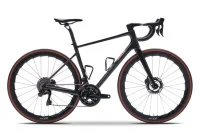Influencing Factors on Position
A version![]() of this article was originally
of this article was originally
published in Triathlete Magazine
My bike was working well for me last season. I felt comfortable. However, after taking a couple months off from riding, I’ve started training on the bike again and things don’t feel as good as I remember them. I’m especially having trouble with the seat. What could have changed over the winter and what are some potential solutions? Thanks.
Amanda , FL
Dear Amanda,
There are a few things that could have changed with your body and your training over the winter that could influence your comfort on the bike. There is also some cycling equipment to review that could be contributing to your discomfort.
First, your body. It is important to keep in mind that your riding position, like your schedule, races, and life in general is dynamic. Time off the bike, changes in your training habits and lifestyle, as well as injuries, can all influence what riding position is optimal and most comfortable for you. For example, if you were training for Ironman Florida last season, your body would have worked all season to adapt to your riding position and style in order to become as comfortable as possible by the race in late fall. After the race, you may have reduced your miles on the bike for a variety of reasons. As cycling mileage is reduced, the cycling specific development of your skeletal system, nerves and muscles would diminish until your miles and intensity on the bike increased again and encouraged them to redevelop for cycling.
What can you do to mitigate these changes?
Modify your position to meet your body’s current needs. Many riders lose cycling strength and flexibility in the off-season and find that they need to build back into their previous position. Building a less physically demanding position in the early season can help you build into your riding more comfortably and confidently. As the muscles develop back into cycling specific recruitment patterns, you can start making subtle modifications and build yourself into a more aggressive position again. A qualified professional fitter can offer you body awareness in regards to how your bike and body interact, and can work with you to develop a plan to modify your position to the needs of your body throughout the season.
Be patient and break your body back into riding. Give your muscles and skeletal system time to adapt to riding again and do not expect to pick up where you left off months earlier. Places where the body contacts the bike are often the most sensitive in this regard. Most riders can relate to the discomfort a narrow saddle can create if you have not been on the bike in awhile. However, as your riding days become more consistent and miles grow, your body builds calluses and the saddle becomes more comfortable. The same is true for cycling specific muscles.
Ride in more than one position. Many top triathletes do not spend all their training time on one bike. Road bikes, cross bikes, mountain bikes and single speeds can all be valuable training tools that can help make the transition back into higher cycling mileage easier by supporting your body differently and requiring different muscle recruitment patterns.
Second, review your cycling clothing and equipment that is at the contact points between you and the bike. Like car brakes, cycling equipment and clothing can wear out in small increments over time and you might not even know it. However, after you take some time off, the wear can become more apparent as your body has not had a chance to adapt to the worn equipment. Some key items to check:
Saddle and shorts. The effects of a worn out saddle or shorts will be most apparent after some time off the bike. As the supportive padding in saddles and shorts breaks down, you will adjust how you sit to help keep make them as comfortable as possible. Over time, this can affect your entire riding position as you start to rotate your pelvis and hold your body differently to accommodate for the wear. You would not run in the same pair of shoes indefinitely and most saddles and shorts are not any different. Replace them periodically so that you are supported properly and comfortably.
Shoes and pedals. As a cycling shoe wears, it becomes less supportive and more flexible in the sole. This can affect your pedaling mechanics and can lead to discomfort ranging from foot numbness to pain in the hips and knees. Pedals and cleats wear out in a similar m ann er and can cause similar issues. Check to make sure that your pedal bearings and cleats are not worn out and allowing side-to-side instability between the shoe and the pedal. If they are, replace the worn parts.
Aerobar arm pads, handlebar tape and gloves. As the foam in these areas compresses, support can become uneven and less comfortable. Check to make sure that the padding between your arms and hands and the bike are in good shape and still offering effective cushioning and support. These items are inexpensive and easy to replace, so there is no reason not to keep them in good shape.
Mechanical components. Worn out or improperly adjusted bearings, brakes and derailleurs can also lead to inefficiencies and discomfort. Have a mechanic review the condition of all the high wear parts and replace anything that is not within wear specifications.
Your equipment and riding position are as dynamic as you are. To maximize comfort, and get yourself off to a good start after some time off the bike, make sure that your riding position is set-up to meet your current needs and body capabilities and that your equipment is in good shape and providing proper support.
Enjoy the ride!
Ian
Originally published July 2004/Copyright © 2004









